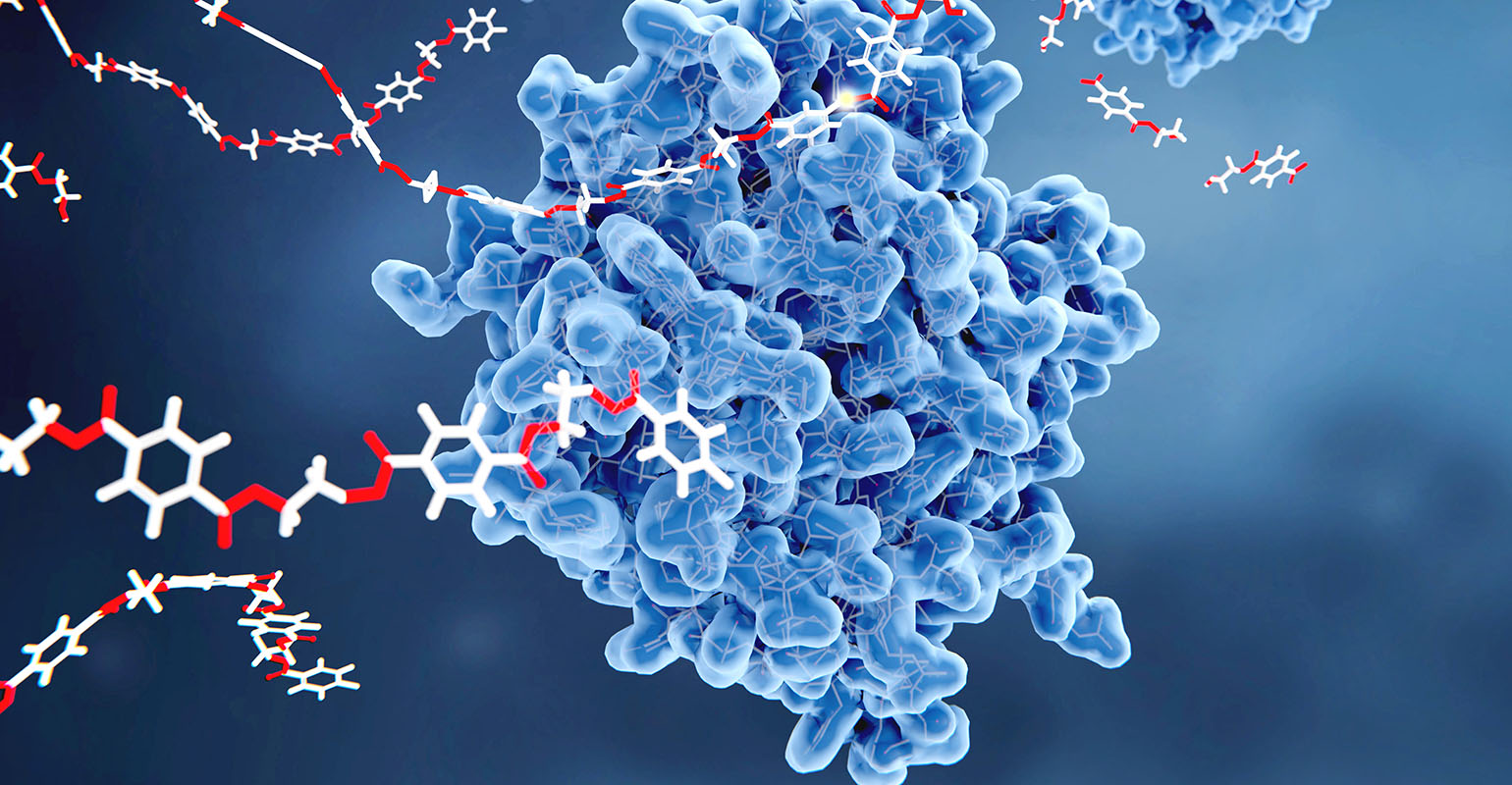
A Better Approach to Biodegradation of Polymer Waste

There are hundreds of researchers focused on applying biological solutions to plastic waste. Their efforts can be divided into two approaches. The first uses “bugs” — microbes, fungi, and so forth — to eat the plastic, while the second, less-common approach uses biochemicals, specifically enzymes made by “bugs,” to degrade the plastic. (Enzymes are protein-based catalysts that speed up a specific chemical reaction without being consumed in it.)
Researchers at UT-Austin have had some notable success with the second approach recently. They used synthetic biology to create an enzyme that degrades polyester back into its starting materials. In other words, the enzymes are breaking the ester bond that makes polyester. The starting chemicals can be recovered and then turned back into new polyester.
Enzymes tuned to specific chemical reactions
This stands in stark contrast to the aforementioned first approach, which involves letting microbes and fungi degrade the material. Such degradation is not as controlled, and the result is a seriously degraded product that isn’t much good for anything else. This is what happens to compostable plastics — you get compost that can’t be turned into plastic. By contrast, enzymes are tuned to specific chemical reactions and cannot influence any other reactions.
The researchers were actually able to demonstrate this circular loop of making polyester plastic, and not just theorize that it could happen. They went through the steps of first degrading samples to the starting monomers and then re-forming a polyester plastic.
There is not enough information available to assess its economic viability — they may well be applying for patents as I write this — but my initial reaction is not too optimistic about this being a commercially viable technology. If you think about the “normal” recycling loop — make a product, sell it, use it, retrieve it, and then reprocess it into a new product — these degradation and repolymerization steps add another operation (or two).
For what? The researchers started with PET and ended up with PET afterwards. What was gained? Or looking at it from another direction: What problem was solved? This is just adding extra steps.
Except if I think about this a bit more . . .
Post-consumer waste in the recycling stream can be heavily contaminated due to poor separation from other recyclables, dirt, food, and other contaminants. Because of this, I’ve always had high respect for recyclers. They’re dealing with a messy feed that I’m glad I never had to. I’ve experienced plenty of bad days just trying to process regrind, a feed stream that never left the plant. To try and work with whatever garbage is sent as recyclables scares me plenty. This technology might make that easier in the future.
Since the enzymatic reaction is so specific, it should be possible that it could find and degrade the polyester — and just the polyester — in a pile of contaminated plastic. The liquid monomers then collect at the bottom of the pile.
If I really let my imagination run wild, you could take a pile of mixed plastics and toss in six different enzymes, one for each of the Big 6 plastics (although high-density and low-density PE could be degraded by the same enzyme). Stand back and then start collecting the monomers. What’s left would truly be garbage that shouldn’t have been in there in the first place.
This is wishful thinking, but such a possibility appears to exist for polyester, so that’s a start. As always, it will come down to economics, and for that we just have to wait and see.

Leave a Reply